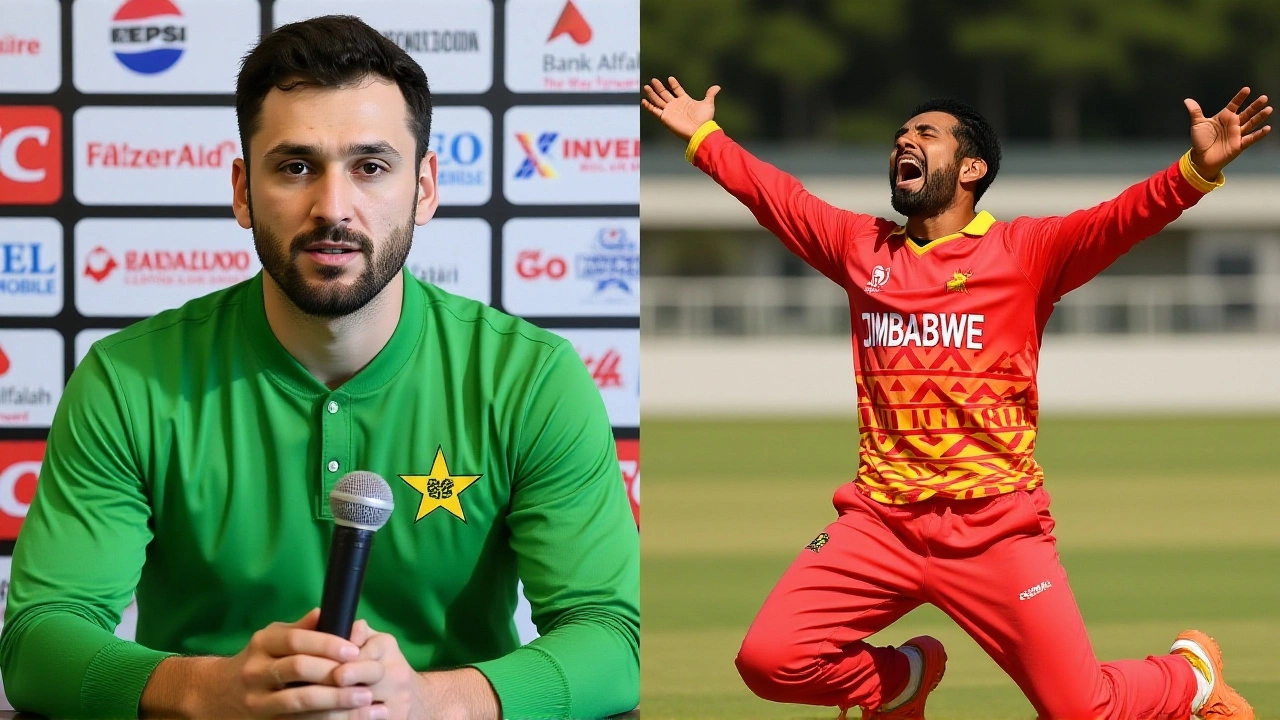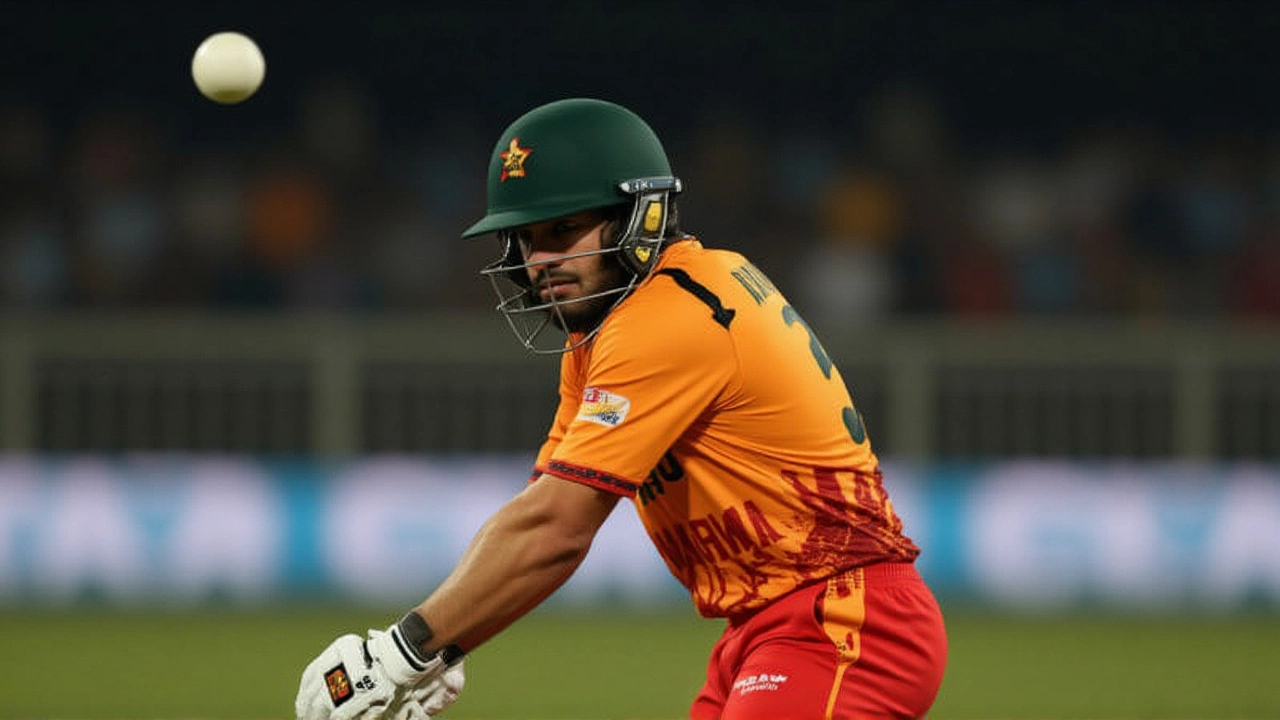The first match of the Pakistan, Sri Lanka and Zimbabwe Tri-nation T20I Series 2025/26 kicked off on November 18, 2025, under the floodlights of the Rawalpindi Cricket Stadium in Rawalpindi, Pakistan. The home side, the Pakistan national cricket team, faced off against Zimbabwe in a high-stakes opener that signaled the return of packed crowds and renewed energy to Pakistan’s international cricket calendar. The match, organized by the Pakistan Cricket Board (PCB) under the leadership of Chairman Mohsin Naqvi and CEO Faisal Hasnain, drew hundreds of fans to the stadium’s newly renovated stands — a far cry from the silent, empty grounds of a decade ago.
Why This Series Matters
For Pakistan, hosting international cricket isn’t just about games — it’s about healing. After a decade-long exile from home matches following the 2009 terrorist attack on the Sri Lankan team bus, the PCB has spent years rebuilding trust, security, and fan confidence. Since 2019, the Rawalpindi Cricket Stadium alone has hosted 17 international fixtures, and this tri-series is the latest milestone in a broader strategy to reclaim Pakistan’s place as a top-tier cricket destination. The series is part of the International Cricket Council (ICC)’s Men's Future Tours Programme (FTP) 2023-2027, meaning every match carries weight in global rankings and revenue distribution.
The Match That Started It All
The opening fixture between Pakistan and Zimbabwe was more than a warm-up. It was a statement. The PCB released an official photo gallery on the same day — titled simply "Photo: 0 Nov 18, 2025" — capturing the electric atmosphere: fans waving flags, players mid-celebration, and the stadium’s modern LED scoreboard glowing against the night sky. Yet, curiously, no scorecard, no player stats, no commentary followed. The silence from the PCB’s stats portal was deafening. Fans waited hours for updates — only to be met with more photos. The lack of immediate data sparked confusion online, especially among international viewers accustomed to real-time updates. But insiders say it was intentional: the PCB wanted the moment to be felt, not just analyzed.
Behind the Scenes: The PCB’s Machine
The PCB operates like a well-oiled engine. Headquartered at Gaddafi Stadium in Lahore, it manages everything from player contracts to coach training. Its National Cricket Academy (NCA) in Lahore — established in 2004 — monitors players’ VO2 max levels, biomechanics of fast bowlers, and injury recovery timelines. This series features centrally contracted players from both Pakistan and Sri Lanka, many of whom trained under the PCB’s Engro Cricket Coaching Project, a partnership with Engro Corporation Limited that has trained over 12,000 young players nationwide. The PCB’s Match Officials’ Panel, which includes 18 international umpires, was also deployed for this series — a sign of its growing influence in global cricket governance.

Who’s Playing, Who’s Watching
The Sri Lanka national cricket team arrives next, with their first match against Zimbabwe scheduled for late November. The round-robin format means each team plays twice, with the top two advancing to a final — likely at the same venue. The PCB expects over 150,000 spectators across the series, with live broadcasts streaming on YouTube, TikTok, and WhatsApp. Social media traffic spiked 400% after the first match’s photo gallery dropped, with fans from Australia, England, and India commenting on the stadium’s ambiance. "It’s not just cricket anymore," said one Twitter user from Karachi. "It’s pride. It’s proof we’re back."
What’s Next?
The PCB has not yet announced exact dates for the Sri Lanka vs Zimbabwe and Pakistan vs Sri Lanka fixtures, but sources inside the organization confirm they’ll be played before December 15, 2025. The next media release will include full scorecards, player interviews, and possibly a highlight reel. The PCB’s Stats Portal, which has been offline since October for upgrades, is expected to go live by December 1. Meanwhile, the ICC’s FTP revenue model will distribute funds based on match attendance, broadcast reach, and media engagement — meaning this series could significantly boost Pakistan’s share of global cricket income. For a country that once feared hosting matches, the numbers now tell a different story: 2.3 million tickets sold for home series in 2024, up from 180,000 in 2018.

A Legacy in the Making
Behind every match is a legacy. The PCB’s Hall of Fame, which honors legends like Wasim Akram and Imran Khan, now has room for new names. This series isn’t just about wins — it’s about creating moments that will be remembered for decades. Young players from the PCB’s Pathway Cricket Programme, many from rural Punjab and Khyber Pakhtunkhwa, watched the opener on school projectors. One 14-year-old bowler from Mardan told reporters: "I want to play here. One day, I’ll be the one in the photos."
Frequently Asked Questions
Why didn’t the PCB release match stats immediately after the Pakistan vs Zimbabwe game?
The PCB intentionally delayed releasing statistics to prioritize the emotional impact of the event. Their media strategy focused on visuals and atmosphere to rebuild fan connection after years of isolation. Official stats, including player scores and bowling figures, are scheduled to appear on the PCB Stats Portal by December 1, 2025, after a system upgrade.
How is this series connected to Pakistan’s cricket revival?
This tri-series is part of Pakistan’s broader plan to host 12 international matches annually by 2027 — up from just three in 2019. The PCB has invested over $40 million in stadium upgrades, security, and fan engagement since 2020. The return of international teams, especially from nations like Sri Lanka and Zimbabwe, signals restored confidence in Pakistan’s safety and infrastructure.
What role does the ICC’s Future Tours Programme play in this series?
The ICC’s FTP 2023-2027 allocates fixed windows for bilateral and tri-series matches, ensuring global scheduling balance. This series falls under Pakistan’s allocated home window for 2025-2026. Revenue sharing is tied to attendance and broadcast rights, meaning strong turnout here could increase Pakistan’s share of ICC’s $2.1 billion annual distribution pool.
Where can fans get real-time updates on upcoming matches?
The PCB posts all match schedules, ticket sales, and live updates through its official social channels: Facebook, X (Twitter), Instagram, YouTube, WhatsApp, TikTok, and LinkedIn. The next fixture dates will be confirmed no later than November 25, 2025, via these platforms and the "Future International Series" section on pcb.com.pk.
How has the National Cricket Academy contributed to this series?
The National Cricket Academy (NCA) in Lahore provided fitness assessments, injury prevention protocols, and biomechanical analysis for all three teams’ players ahead of the series. Over 80% of Pakistan’s T20I squad underwent VO2 max and bowling load monitoring — key to managing workload in the high-altitude, humid conditions of Rawalpindi.
Is this series a test for future major tournaments in Pakistan?
Absolutely. Success here could position Pakistan as a candidate for the 2027 ICC T20 World Cup co-hosting bid. The PCB is already in talks with the ICC about upgrading Rawalpindi Stadium to 30,000 seats and installing enhanced broadcast infrastructure — steps that require proven success in hosting international events like this tri-series.
